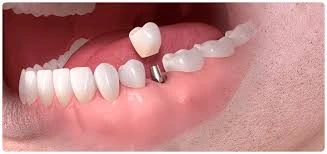Matthew McConaughey and the Rumors of a Hair Transplant: Fact or Fiction?
Matthew McConaughey, the Academy Award-winning actor known for his charismatic charm and signature good looks, has long been in the spotlight. Among the many rumors surrounding his career and personal life, one question that fans and media have been asking is: Did Matthew McConaughey get a hair transplant? In this article, we’ll delve into the details behind these rumors, explore the actor’s hair transformation, and discuss the process of hair transplants in general.

Recognizing Matthew McConaughey’s Hair Thinning in the 1990s
McConaughey has openly acknowledged that during the 1990s, he began noticing significant hair thinning. His once-thick, wavy locks were becoming sparse, particularly around the temples and crown, which are common areas affected by male pattern baldness. Rather than letting this change affect his confidence, McConaughey decided to embrace a bold look by shaving his head completely. This move was both practical and stylish, as many men find a shaved head to be an empowering option when faced with thinning hair.
Despite shaving his head, the noticeable thinning remained a topic of conversation among fans. Male pattern baldness, or androgenetic alopecia, affects millions of men worldwide, including high-profile celebrities like McConaughey. For many, the question remained: Did he do anything to reverse the hair loss, such as opting for a hair transplant?
Matthew McConaughey’s Hairline Transformation
One of the key pieces of evidence fueling rumors of a hair transplant is Matthew McConaughey’s noticeably different hairline in recent years. In the late 1990s and early 2000s, the actor’s hairline appeared to be receding—particularly visible in films like A Time to Kill and The Wedding Planner. However, in more recent films, fans have observed that McConaughey’s hairline looks fuller and lower, with thicker hair growth.
During a 2017 interview with American Masters, footage from 2015 showed his hair thinning, sparking even more speculation about whether he had undergone some form of hair restoration. The transformation was gradual but noticeable, leading experts to believe that a hair transplant might have been the solution.

Hair Transplant: Surgeons Weigh In
Many professionals in the field of hair restoration have commented on McConaughey’s changing hairline. Notably, Dr. Epstein, a well-respected hair transplant surgeon, suggested in an interview with Hollywood Life that McConaughey’s hairline looks fuller and lower than it did in the past, leading him to believe that a hair transplant was likely the cause. Dr. Epstein commended the results, emphasizing how natural and well-executed the transformation appeared.
Similarly, Dr. Youn, another expert in cosmetic surgery, expressed his belief in an interview with Radar Online that McConaughey had undergone a hair transplant, based on the noticeable improvement in his hairline. He praised the actor’s results for looking natural and seamless, which is the goal of any successful hair restoration procedure.
McConaughey Dismisses the Hair Transplant Rumors
Despite widespread speculation from experts and fans alike, Matthew McConaughey has repeatedly dismissed claims that he underwent a hair transplant. Instead, he credits the regrowth of his hair to the use of a topical ointment that he claims has stimulated and nourished his hair follicles. He’s spoken about his dedication to using this product consistently and how it helped him achieve his hair’s comeback.
Although McConaughey attributes his thicker hair to a non-surgical solution, many remain skeptical. Regardless of the method, his hair transformation has certainly sparked interest in the topic of hair restoration.

What is a Hair Transplant?
A hair transplant is a cosmetic surgery procedure designed to combat hair loss. It involves taking hair follicles from one area of the scalp, usually from the back or sides (where hair is typically more resistant to thinning), and transplanting them to areas that are thinning or balding. This can result in a more natural-looking hairline and thicker hair growth in areas that have experienced hair loss.
There are two primary types of hair transplant techniques:
- Follicular Unit Extraction (FUE): In this method, individual hair follicles are harvested directly from the donor area and transplanted to the balding or thinning areas. This technique is less invasive and leaves minimal scarring.
- Follicular Unit Transplantation (FUT): In FUT, a strip of scalp is removed from the donor area, and the hair follicles are dissected and transplanted. While this technique can result in more follicles being transplanted at once, it leaves a linear scar on the back of the head.
Each method has its pros and cons, and the choice between them often depends on the patient’s specific needs, the extent of hair loss, and the surgeon’s expertise.
Are Hair Transplants Effective?
Yes, hair transplants can be highly effective for individuals experiencing hair loss or thinning. When done by a skilled surgeon, a hair transplant can provide long-lasting and natural results. However, it’s important to note that the success of the procedure also depends on factors like the quality of the donor hair and how well the patient follows post-surgical care instructions.
For those who may not be good candidates for a hair transplant, other hair restoration treatments such as scalp micro pigmentation or the use of topical medications (like Minoxidil) may also help slow down or reverse hair loss.
Can Natural Methods Stop Hair Loss?
While natural methods may not completely reverse significant hair loss, they can help promote overall hair health and, in some cases, slow down the thinning process. Here are a few natural approaches to consider:
- Nutritional Support: A well-balanced diet that includes essential nutrients like vitamins A, C, D, and E, as well as minerals like zinc and iron, is important for maintaining healthy hair. Hair growth can be influenced by your overall health, and making sure your diet is rich in these nutrients can support stronger, healthier hair.
- Scalp Stimulation: Massaging the scalp can increase blood flow to the hair follicles, potentially encouraging hair growth. Some people also use micro-needling devices to further stimulate the scalp.
- Stress Management: Chronic stress can contribute to hair loss. Finding effective ways to manage stress, such as through exercise, meditation, or therapy, can positively impact hair health.
- Gentle Hair Care: Avoiding excessive heat styling, chemical treatments, and harsh hair products can reduce hair damage and breakage, helping you retain the hair you have.
While these natural approaches may support hair health, they may not be enough for those with significant hair loss. For individuals seeking more definitive solutions, surgical interventions like hair transplants are often recommended.
When Did Matthew McConaughey Start Balding?
Sharp-eyed fans began noticing a change in McConaughey’s hair in the late 1990s, particularly around his temples and crown. This gradual thinning became more apparent by the mid-2000s. As time passed, the difference in hair density was increasingly noticeable, especially when comparing his earlier roles to more recent appearances.
By the time McConaughey starred in True Detective, the Hollywood star’s hair had thinned significantly. Fans and media outlets speculated about the actor’s changing hairline, leading to rumors of a potential hair transplant or other hair restoration treatments. McConaughey’s response was characteristically cool, and he even joked about the issue in interviews.
McConaughey’s Hair Journey: A Lesson in Confidence
What’s admirable about Matthew McConaughey’s journey through hair thinning and possible restoration is how he handled the entire situation with humor and grace. Rather than trying to hide his hair loss, he embraced it and kept his confidence intact. His openness about the issue serves as a reminder that celebrities face the same challenges as the rest of us.
McConaughey’s hair journey offers inspiration for men going through a similar experience. Whether you’re considering a hair transplant, exploring other hair restoration methods, or simply accepting hair loss as a natural part of aging, his story highlights that confidence is key.
Conclusion: Did Matthew McConaughey Get a Hair Transplant?
While Matthew McConaughey himself dismisses the idea that he had a hair transplant, many experts in the field suggest otherwise, based on the visible changes in his hairline. Whether it’s due to a hair transplant, topical treatments, or a combination of both, McConaughey’s hair transformation has certainly piqued interest in the world of hair restoration.
If you’re considering a hair transplant or other hair loss treatments, it’s important to consult with a qualified professional who can guide you through the options and help you determine the best course of action for your unique situation.



